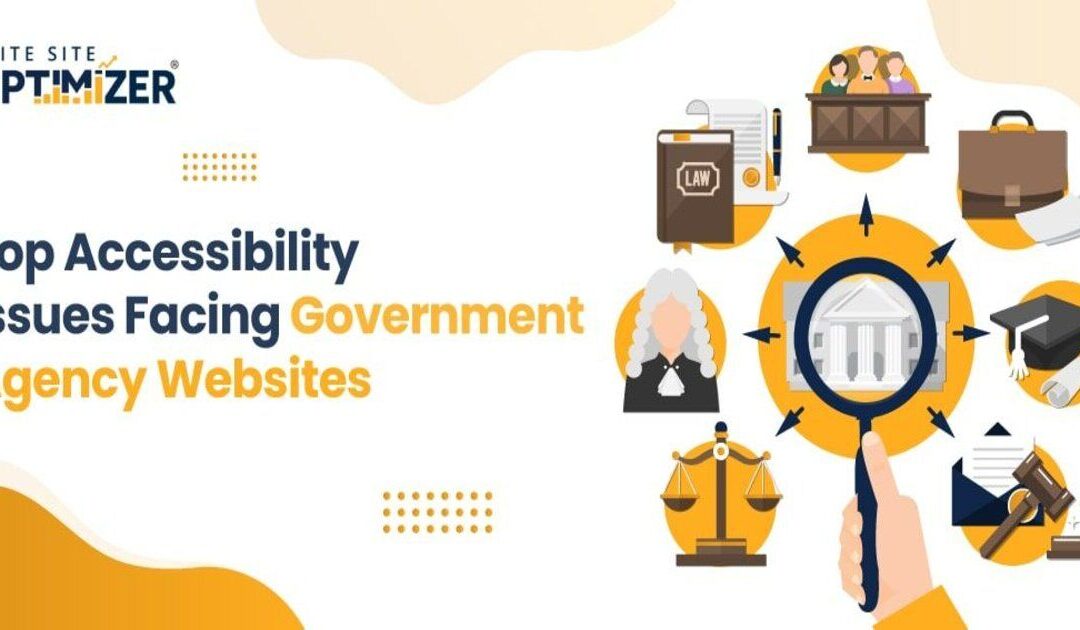Government agencies and organizations face many challenges when it comes to creating user-accessible websites. These organizations need to make their content available to every person who might need their services, and they are held to the highest standards of accessibility and usability. Issues experienced when navigating government websites can prevent people from accessing vital information and necessary services. Government websites also need to employ search engine optimization and use links effectively so that people can find their resources even if they don’t know where to go. Identifying and addressing the leading issues on government websites will help these organizations and businesses who work with government agencies fulfill their goals more effectively.
Accessibility Concerns
Government websites need to be available to all users regardless of disabilities and other barriers to access, as described by laws such as the USA’s Americans with Disabilities Act and Section 508. The Web Content Accessibility Guidelines provide various recommendations for making websites accessible; government websites should be in accordance with these guidelines and the requirements set by their internal rules.
Websites need to make their content readable to the general public by supporting a wide variety of browsers and platforms, using text and layouts that are easy to read and scroll, and organizing sites to make navigation between pages simple. In addition, they should support accessibility features such as text to speech, high-contrast themes, captions and text alternatives for video and audio content, clear visual cues, and detailed explanations on any pages with user input.
Broken links are a constant problem as websites age. Government resources and organizational goals are likely to change over time, causing older pages to become obsolete and get deleted. Operators of government websites need to check for 404 errors using a link checker, add redirects to newer pages and have a custom error screen that directs users to the navigation and search functions. Links also need to indicate clearly if they go to non-government websites to avoid giving approval to those sites.
Mobile-friendly Design
More and more people access web pages primarily through mobile devices, so government sites need to be fully accessible to mobile users. There are several aspects to mobile accessibility.
- Mobile sites need to have a responsive design or another approach that makes pages usable on a variety of screen sizes.
- They need to have full functionality on touchscreens, so they can’t rely on mouseover information.
- They need to load quickly and not use too much data.
- Forms and other user-interactive elements need to be easy to edit and submit on mobile.
Government sites often provide forms, transcripts, notices, and laws in PDF format, which can have display issues, especially on mobile devices. Sites should not rely heavily on PDFs for browsing important information, so HTML alternatives can help. PDFs also should follow accessibility standards as described by Adobe here.
Search Engine Optimization
Getting the content on your web pages to the top of search results is extremely valuable. While government websites don’t have competitors like businesses do, they need to get their information to their citizens efficiently. Researching keywords and using them in headers, meta descriptions, and text content can raise your page rank. At the least, government websites should turn up first in searches using their agency’s name, and their most commonly-accessed information should be near the top on keywords related to the subject.
Read also:-Do Sitemaps Affect Crawlers
Interconnectivity and Contact Information
Since users don’t always know which of many government sources may have the information they need, linking to resources from other government sites can help users. Contact information including office phone numbers and email addresses should be accessible from every page if users have trouble finding what they’re looking for.
Resources such as the Department of Health and Human Services guides and the Access Board’s Comparison Table of WCAG 2.0 to Existing 508 Standards can help websites reach full accessibility. Government officials and businesses who work with them should familiarize themselves with the goals and priorities for making websites as accessible as possible.







